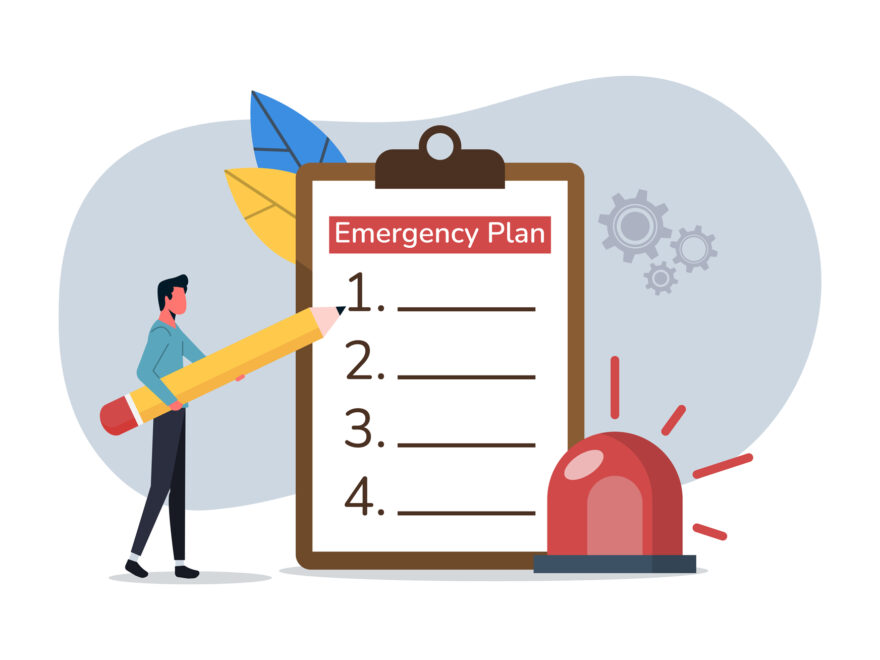An emergency plan is a written procedure telling people in the workplace what to do in an emergency. This fact sheet tells you, a person conducting a business or undertaking (PCBU), how to prepare and maintain an emergency plan for your workplace.
![]()
What to include in an emergency plan
Emergency plans must include the following:
1. Emergency procedures including:
- an effective response to an emergency
- evacuation procedures
- procedures for notifying emergency services at the earliest opportunity
- medical treatment and assistance procedures to make sure there is effective communication between the person authorised by you to coordinate the emergency response and all other persons at the workplace
2. Plans for testing the emergency procedures, including the frequency of testing
3. Information, training, and instruction to be given to relevant workers for implementing the emergency procedures.
Your emergency plan should include a detailed floor plan showing where emergency equipment and first aid supplies can be found, and the location of utilities.
What to consider when making an emergency plan
When working out your emergency plan, you must take into account:
1. The size and location of the workplace
2. The number of workers
3. The nature of the work being carried out and the workplace hazards
4. The types of emergency situations your workplace may face. For example:
- fire or gas leak
- electricity or water outage
- natural disasters
- robberies and bomb threats.
Emergency plans should be tailored to the type of work and workplace. If the work is low risk, emergency plans may not need to be long or complicated. In higher risk situations, more comprehensive plans will be required.
All workers should know who is responsible for activating and coordinating emergency procedures and what they must do to keep themselves and others safe in an emergency.
Maintaining & testing emergency plans
A well maintained emergency plan should be reviewed and updated:
- when there are changes to work activities or the physical workplace
- if the workers who have emergency responsibilities change
- if new risks have been identified.
Emergency plans should be tested
at least yearly.
- Testing can be as simple as thinking of a scenario (e.g. fire, earthquake) and working it through the plan, or staging a mock emergency such as a fire drill to test how well the plan works.
- Following any testing, a review should be conducted to identify areas for improvement or updating. This should include seeking and considering feedback from your workers.
Worker engagement
You must engage with your workers when making decisions about emergency plans and when proposing changes that may affect their health or safety.


